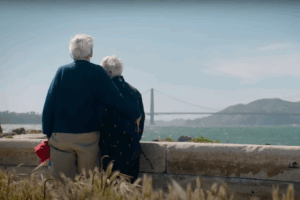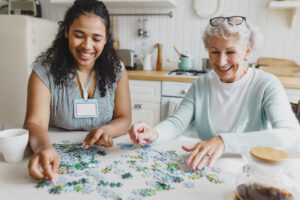When I was a social worker, I worked with older adults in nursing homes, hospitals, and sub-acute rehabilitation centers. The majority of them were happy and well-adjusted. However, there were many that were going through personal and health crises. Others suffered from mental illnesses such as depression their entire lives. At times, these became too much for the patient to bear, and thoughts of suicide entered their minds. In fact, those over 65 are the age group with the highest rate of suicide.[1. “Suicide rate is highest in over-65 age group,” September 1, 2013, https://www.seniorvoicealaska.com/story/2013/09/01/health/suicide-rate-is-highest-in-over-65-age-group/231.html]
When someone you love seems depressed enough to harm themselves, it can be distressing, to say the least. It can also leave you scrambling for the best way to help them. But how do you know if the situation is one that can be addressed over time or if a preventable tragedy is just around the corner? Take a look at the following three scenarios in which there are risks for elder suicide, and potential ways to handle each one.
Case Study #1: Mrs. Thompson
Mrs. Thompson is an eighty-year-old woman who lives in a nursing home with her husband who has Alzheimer’s. Recently, her husband’s condition has worsened. Mrs. Thompson, normally friendly and sociable, has become more withdrawn. She mentions that she sometimes thinks of dying so she won’t have to watch her husband suffer. The hospital’s social worker visits and speaks with her. She discerns that Mrs. Thompson’s thoughts of suicide are vague and imprecise, with no concrete plan to harm herself. She expresses sympathy with Mrs. Thompson’s situation. She asks if she would like to speak to a therapist to discuss her feelings further—possibly on a regular basis. Mrs. Thompson agrees. The social worker notifies the charge nurse and requests a mental health consult with a physician.
Case Study #2: Ms. Chowdhury
Mr. Chowdhury is a seventy-five-year-old divorced man. He’s in a sub-acute rehabilitation center recovering from a broken hip. He has a large family who supports him, but feels guilty that this latest setback will be a burden on them. He also worries that his hip and other health issues will make future years miserable. He mentions wanting to kill himself several times. The facility social worker visits with him. Mr. Chowdhury indicates that he frequently thinks of dying and has for a while, but with no current plan to carry out a suicide. He is hesitant to accept counseling, but the social worker convinces him to try it. She notifies the charge nurse, who agrees to monitor him carefully. A mental health consult is also requested, with a note to discuss possible anti-depressant medication.[2. “Geriatric depression: The use of antidepressants in the elderly,” November 7, 2011, https://www.bcmj.org/articles/geriatric-depression-use-antidepressants-elderly] with Mr. Chowdhury
Case Study #3: Mrs. Wolowitz
Mrs. Wolowitz is a ninety-year-old widow who has lived alone in her home for several years. Her health has deteriorated over the past few months and she frequently comments how much she misses her husband. Her family only visits on special occasions. Ms. Wolowitz barely manages to do her own cooking and cleaning. A friend tries to help by providing transportation and running errands, but she’s overwhelmed with her own responsibilities. A visiting geriatric care manager learns Mrs. Wolowitz has daily thoughts of suicide, along with a plan to overdose on her sleeping pills. The care manager immediately contacts a crisis center that admits Mrs. Wolowitz for further evaluation.
Elder Suicide Risk Does Not Have to Lead to Tragedy
It’s important to understand that suicide is a preventable cause of death and that suicide risk can be decreased before the situation becomes critical. In the case of homebound adults whose loved ones live far away, frequent phone calls, letters, and communication via social media can help significantly. A few hours a week with a visiting home health aide can also do wonders for their mindset and well-being. Finally, there are resources like the Friendship Line that offer companionship and conversation. Once the medical aspects of suicide risk have been addressed, consider following up with one of these options. You may be able to help someone whom you care about avoid a heartbreaking situation with permanent consequences.
If you are unsure of how to best help an aging loved one, the trained and compassionate staff at the Institute on Aging is here to help you make that decision and gain the best in at-home care for older adults. Contact us to find out more.






